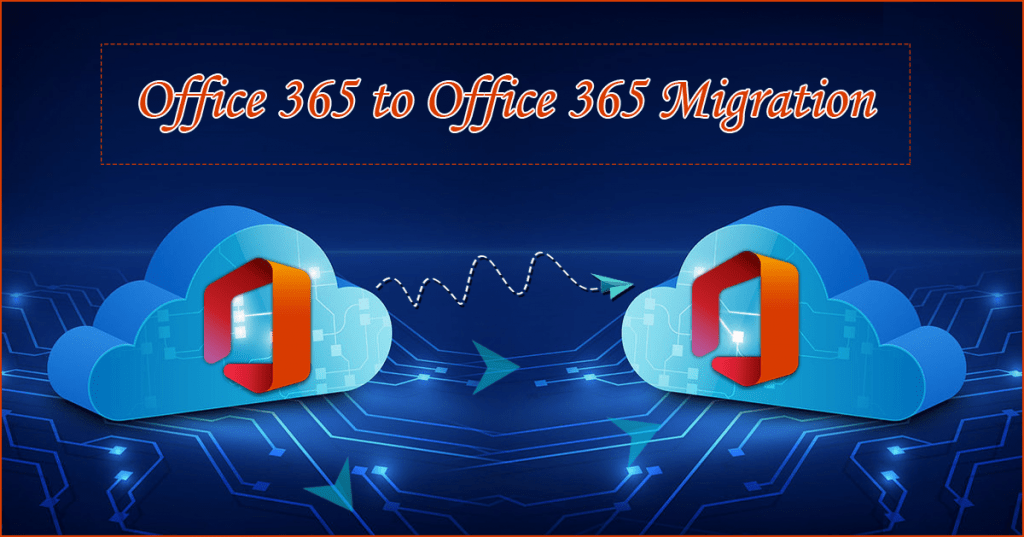
Office 365 Migration Types: Perfect Way For Successful Migration

Today, more businesses are moving to Office 365 for their cloud-based networking, collaboration, and product functionality as cloud computing becomes more mainstream. Migrating from Exchange to Office 365 can leave the user in confusion about which way to go for Office 365 migration Types.
Also, migrations can take anything from a few weeks to several months. There are many options to consider when migrating to Office 365. In this article, we’ll go through the different Office 365 migration types to help you to select the best method for your organization.
Factors to consider for choosing the right Office 365 migration types
As such, there is no prerequisite for selecting the best method for Office 365 migration Types. However, according to your organization’s requirements, you can go ahead selecting the correct type of Office 365 migration Types. But considering multiple factors will allow you to choose the better method to import your mailboxes items like emails, contacts, and other mailbox items to Office 365. Look at some given-below factors before approaching for Office 365 migration method:
- The total number of email accounts and their associated item.
- The total amount of data needed for migration.
- Time allocation for migration task.
- The total budget allocated for Office 365 migration.
- The current email system of the organization.
- The budget allocated to the migration task.
After considering the above factors, you can move towards choosing the best method for Office 365 migration.
Type of Office 365 migration method
Let’s look at the individual methods for Office 365 migration after checking at the factors that influence the decision to choose the best Office 365 migration types
Staged Migration
As the name suggests, it helps to migrate mailboxes in small batches. It is recommended for medium-sized business entities having over 2000 mailboxes and currently using on-premises Microsoft Exchange 2003 or 2007. Users with Office 365 mailboxes will send and receive emails from users on-premises server and vice versa. This method ensures a smooth transfer and necessitates on-premises synchronization and other technological tweaks.
Cutover Migration
It is one of the simplest methods to move the mailboxes to Office 365. This method allows the movement of mailboxes at once. Use this type of Office 365 migration if you are using Exchange 2003, 2007, 2010, or 2013 and have less than 2,000 mailboxes. Microsoft recommends the cutover migration for businesses with less than 150 users due to the time it takes to migrate so many accounts.
Hybrid Migration
The Hybrid migration allows retaining the on-premises server while moving to Office 365. It is one of the complex methods among Office 365 migration types. Through this method, you can move your mailboxes in and out of Exchange Online. You can also select the mailboxes to keep in on-premises and which to migrate to Office 365. This method is suitable if you have more than 2,000 mailboxes. Exchange Server 2010 or later is needed to enable hybrid deployment.
A Professional tool for Office 365 to Office 365 migration Types
Shoviv Exchange Server Suite is recommended and widely used by many organizations and individuals. This tool has a user-friendly and convenient GUI that makes it simple and easy to use. Even non-technical and inexperienced users can use this software to migrate from Office 365 to Office 365. Look-out at the prominent features of this tool:
- Shoviv Exchange Server Suite is a well-known solution for recovering inaccessible and corrupted .edb,.pst, and. ost files, as well as proficiently exporting .edb, ost, and.pst files into Live Exchange, Office 365, and Outlook Profile Mailboxes & PST Files.
- The eDiscovery feature enables users to search for specific items based on item properties such as subject name, sender name, recipient name, attachment availability, date criteria, and so on. This feature improves the Software’s working experience.
- Apart from the above features, this tool allows saving the items into the local directory in multiple formats like RTF, EML, MSG, vCAL, and CAL.
- The tool comes up with a free demo version that allows processing the first 50 items/folder.
Conclusion
While cutover migration is best for small businesses with a few users, larger organizations need to be staged migration, and hybrid implementations are suitable in cases, where companies keep their current mail servers active when migrating to Office 365. These Office 365 migration types are indeed complex for non-technical users to migrate their mailboxes to Office 365. To overcome the complexity, you must try Shoviv Office 365 migration Types to facilitate migrating from Exchange to Office 365 in a seamless manner. Use this tool trial version to check the performance of the software.